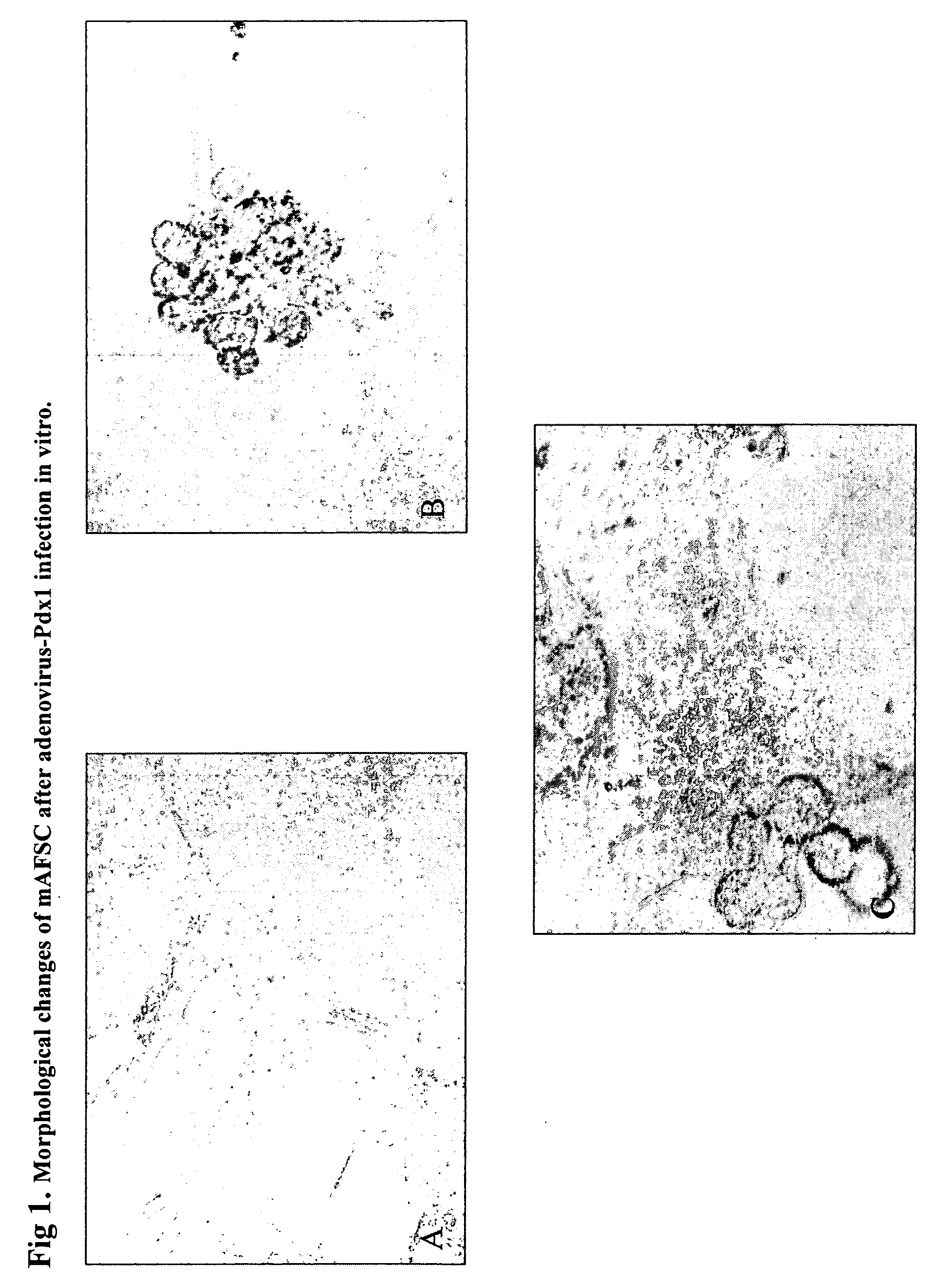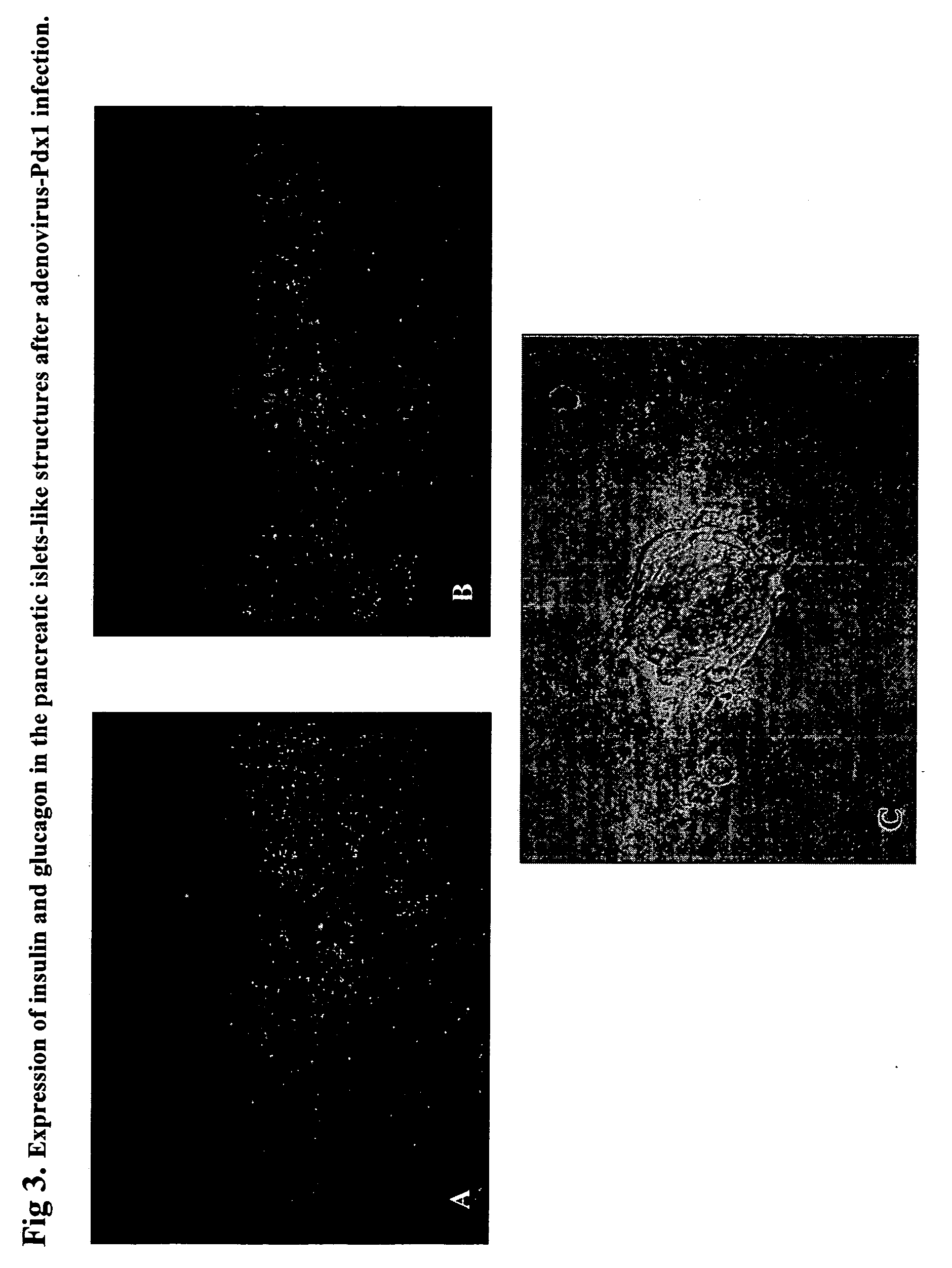Regeneration of pancreatic islets by amniotic fluid stem cell therapy
- Summary
- Abstract
- Description
- Claims
- Application Information
AI Technical Summary
Benefits of technology
Problems solved by technology
Method used
Image
Examples
Embodiment Construction
[0037]“Diabetes” as used herein includes both insulin-dependent diabetes (encompassing patients described as being afflicted with type I diabetes, as well as some other patients) and non-insulin-dependent diabetes (encompassing most patients described as being afflicted with type II diabetes).
[0038]“Amniotic fluid stem cell” as used herein refers to a cell, or progeny of a cell, that (a) is found in, or is collected from, mammalian amniotic fluid, mammalian chorionic villus, and / or mammalian placental tissue, or any other suitable tissue or fluid from a mammalian donor, (b) is pluripotent; (c) has substantial proliferative potential, (d) optionally, but preferably, does not require feeder cell layers to grow in vitro, (e) optionally, but preferably, specifically binds c-kit antibodies (particularly at the time of collection, as the ability of the cells to bind c-kit antibodies may be lost over time as the cells are grown in vitro).
[0039]“Pancreatic-like cell” as used herein refers...
PUM
| Property | Measurement | Unit |
|---|---|---|
| Time | aaaaa | aaaaa |
| Permeability | aaaaa | aaaaa |
Abstract
Description
Claims
Application Information
 Login to View More
Login to View More - R&D
- Intellectual Property
- Life Sciences
- Materials
- Tech Scout
- Unparalleled Data Quality
- Higher Quality Content
- 60% Fewer Hallucinations
Browse by: Latest US Patents, China's latest patents, Technical Efficacy Thesaurus, Application Domain, Technology Topic, Popular Technical Reports.
© 2025 PatSnap. All rights reserved.Legal|Privacy policy|Modern Slavery Act Transparency Statement|Sitemap|About US| Contact US: help@patsnap.com



